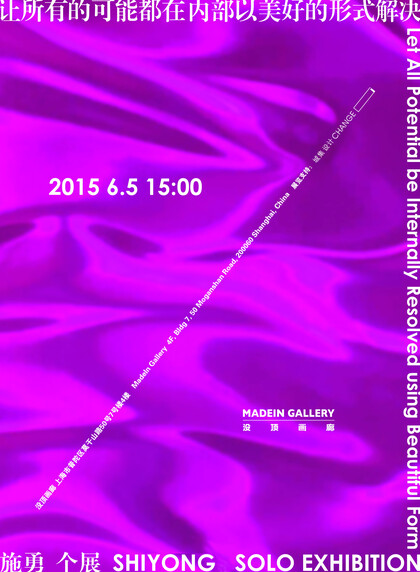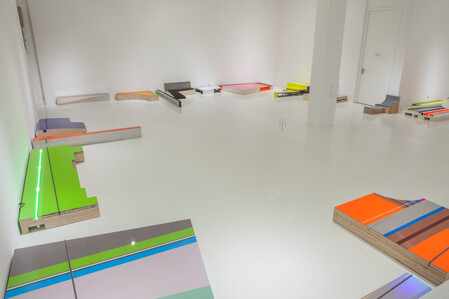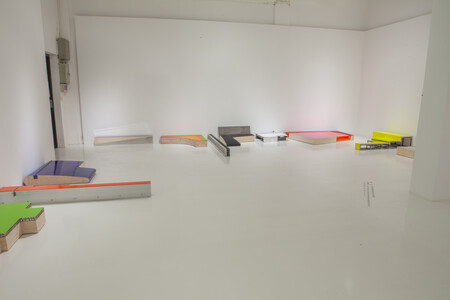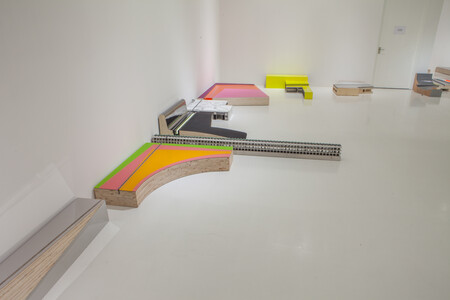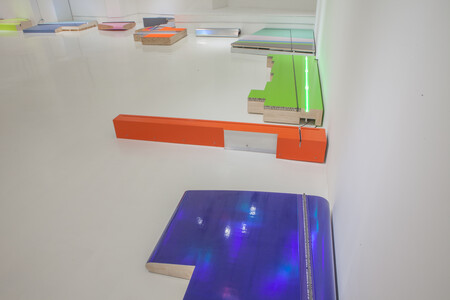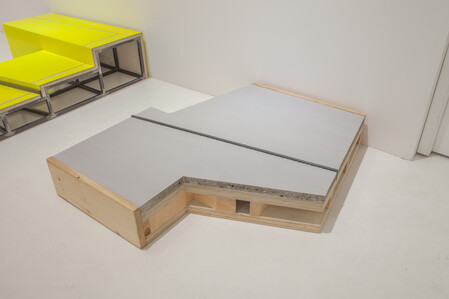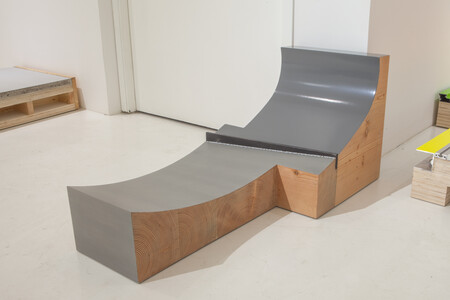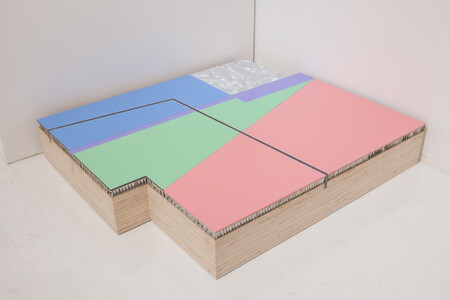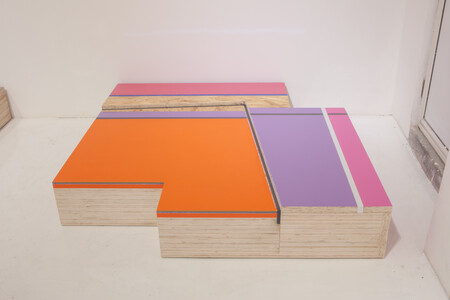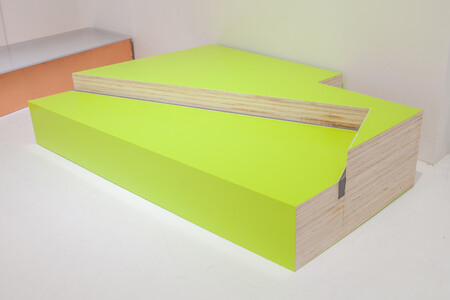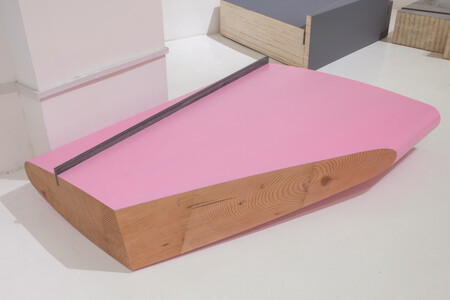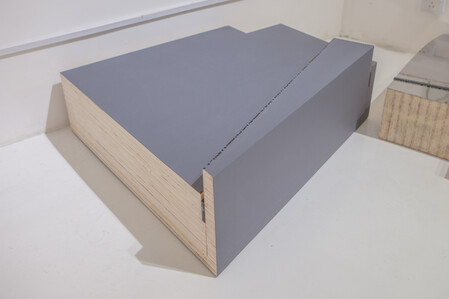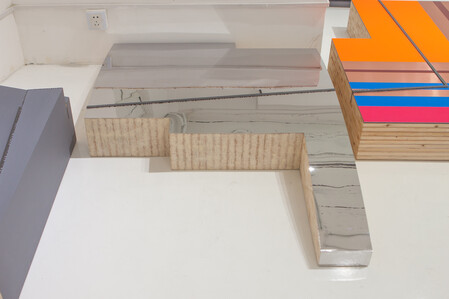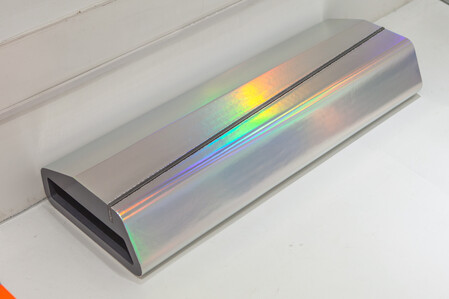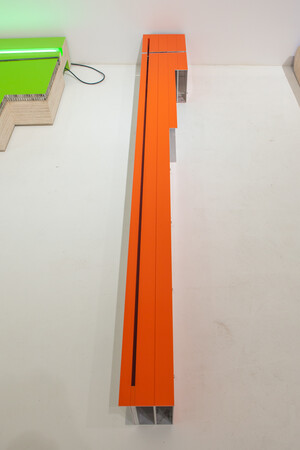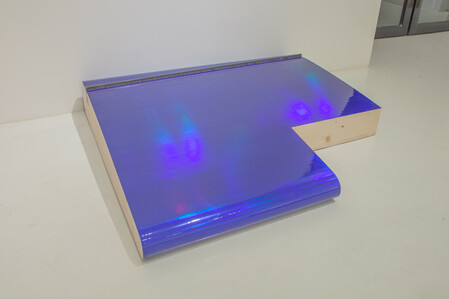Solo Exhibition MadeIn Gallery, Shanghai
Shi Yong, born in 1963 in Shanghai, is a prominent figure in the contemporary art world in China. Since 1992, his works and practice - experimental, rational and pioneering - largely influenced the art scene.
In 1992, after achieving the painting The Last of Classical Worship, using for the last time this medium, Shi Yong built a series of scenes, comparable to physics experiments in the basement of the Shanghai Huashan Art School, marking the beginning of video and installation creation. Public Address Site: a Private Space with Cross Echo produced in 1995 constitutes a climax in this period. The work, that explores the state of anxiety felt as a private space is invaded, received largely positive reviews from critics.
From 1996, “cultural identity”, “power of language”, “cultural pluralism”, became central subjects in his works, as seen in To Live “Elsewhere”, Don’t Touch DON’T TOUCH, Please Choose the Best and Add One Concept On Top Of Another. Pursuing a reflection on modernism and consumerism ideologies, he established an individual ideal and creation theme, developed around the concept of the ideal Shanghai citizen. These topics became a source of exploration that was continuously expanded over a period of ten years, through which he proposed new perspectives on consumption, daily life, and cultural industry. The “Shanghai new look” he designed: a man with blond hair, wearing a Mao suit, somehow grotesque, astute, humorous, strongly remained in people’s mind.
Moreover, Shi Yong didn’t restrain himself to reiterate a specific image, he further concentrated on the relation between memory and reality. He used the act of “erasing” as an intervention towards reality: “my reality is comparable to the act of taking a TV remote control and zap non stop, until turning the TV off.” Sorry, There Will Be No Documenta in 2007, One Day Afternoon, A Gallery Disappeared and Untitled in a similar way all eradicate the original object or subject to push to the forefront a fragmented reality: as reality disappears, art becomes visible. In Think Carefully, Where Have You Been Yesterday? And Your Secret Is My Weapon Shi Yong as a producer of “reality”, uses language to question the truth. These enigmatic “realities” are all correlated together through language, and are sophisticatedly displayed.
Let All Potential Be Internally Resolved Using Beautiful Form will present for the first time a site-specific installation, developed around the notions of space, material and language. Through “erasure” and “language” he will bring narrative vocabulary into “reality": the kind of reality that can only be presented as a form of Abstract art. According to the words of the artist: “I like to decompose narration by embedding a certain vocabulary, within a narrative context, until it becomes another language.” Using this concept of “erasure” he reveals a covered or deliberately artificial reality.
About the artist:
Shi Yong, born in 1963 in Shanghai, graduated in 1984 from the Fine Arts Department of the Shanghai Light Industrial School, currently lives and works in Shanghai. His exhibitions include: Essential Matters-Moving Images from China (Borusan Contemporary Perili Kosk, Istanbul, Turkey, 2015), Myth/History II: Shanghai Galaxy (YUZ Museum, Shanghai, 2015), Hans van Dijk: 5000 Names (Ullens Center for Contemporary Art, Beijing, Witte de With, Rotterdam, the Netherlands, 2014), Off Site Programme, Silent Film (Ikon Gallery, Birmingham, U.K.,2014), Grasstress (Venice, Italy, 2011), Big Draft-Shanghai (Kunstmuseum Bern, Bern, Switzerland, 2010), Shanghai Kino (Kunsthalle Bern, Switzerland, 2009), Think Carefully, Where Have You Been Yesterday? (BizArt Art Center, Shanghai, 2007), The Second Guangzhou Triennial, BEYOND: an extraordinary space of experimentation for modernization (Guangdong Museum of Art, Guangzhou, 2005), The Heaven – The World (ShanghArt H-Space, Shanghai, 2004), 4th Shanghai Biennale, Urban Creation (Shanghai Art Museum, Shanghai, 2002), The Third Asia-Pacific Triennial of Contemporary Art (Queensland Art Gallery, Brisbane, Australia,2002).
More Pictures:
Let All Potential Turn out Beautifully in the Form of Redundancy - Shi Yong: From a “Performer” to an “Author”

